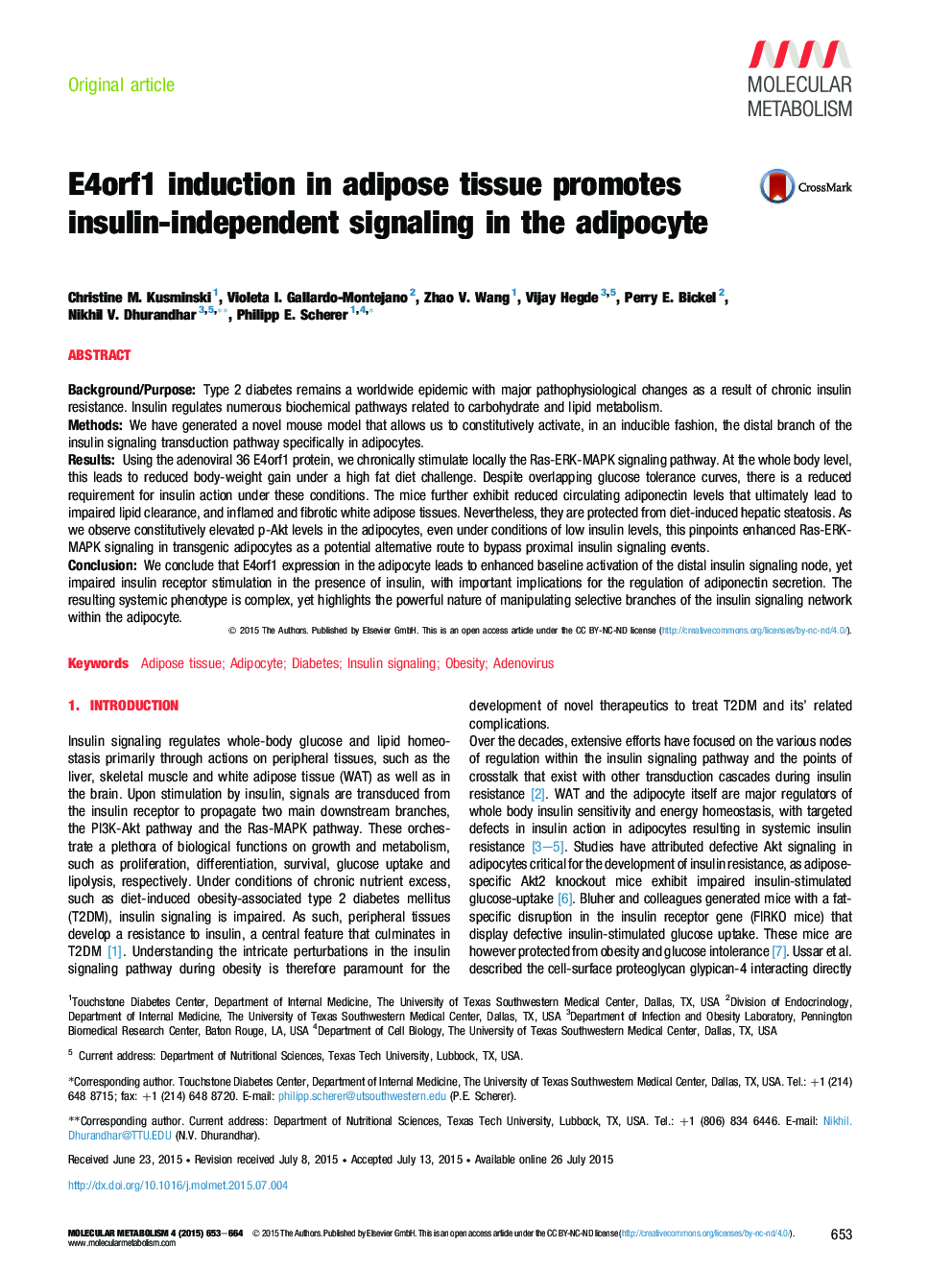| Article ID | Journal | Published Year | Pages | File Type |
|---|---|---|---|---|
| 3001374 | Molecular Metabolism | 2015 | 12 Pages |
•Inducible activation of the distal branch of the insulin pathway in adipocytes.•Insulin-sparing characteristics during glucose tolerance testing.•Chronic activation of the distal Ras-ERK-MAPK signaling pathway.•Reduced body-weight during metabolic challenge.•Preserved carbohydrate metabolism at the expense of lipid metabolism.
Background/PurposeType 2 diabetes remains a worldwide epidemic with major pathophysiological changes as a result of chronic insulin resistance. Insulin regulates numerous biochemical pathways related to carbohydrate and lipid metabolism.MethodsWe have generated a novel mouse model that allows us to constitutively activate, in an inducible fashion, the distal branch of the insulin signaling transduction pathway specifically in adipocytes.ResultsUsing the adenoviral 36 E4orf1 protein, we chronically stimulate locally the Ras-ERK-MAPK signaling pathway. At the whole body level, this leads to reduced body-weight gain under a high fat diet challenge. Despite overlapping glucose tolerance curves, there is a reduced requirement for insulin action under these conditions. The mice further exhibit reduced circulating adiponectin levels that ultimately lead to impaired lipid clearance, and inflamed and fibrotic white adipose tissues. Nevertheless, they are protected from diet-induced hepatic steatosis. As we observe constitutively elevated p-Akt levels in the adipocytes, even under conditions of low insulin levels, this pinpoints enhanced Ras-ERK-MAPK signaling in transgenic adipocytes as a potential alternative route to bypass proximal insulin signaling events.ConclusionWe conclude that E4orf1 expression in the adipocyte leads to enhanced baseline activation of the distal insulin signaling node, yet impaired insulin receptor stimulation in the presence of insulin, with important implications for the regulation of adiponectin secretion. The resulting systemic phenotype is complex, yet highlights the powerful nature of manipulating selective branches of the insulin signaling network within the adipocyte.
